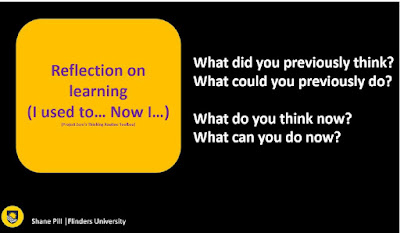I mapped out the model I call Play with Purpose for developing player game sense as people were telling me that the model I was discussing filled a missing 'piece' of information for them about the Game Sense approach- when, why or how to use 'other' teaching styles in a game based approach (GBA). GBA's are models like TGfU, Tactical Games, Games Competency Approach, Game Sense approach, etc. A GBA for games and sport teaching in physical education and sport coaching had been described often as 'discovery' or 'guided discovery' teaching. It was Brendan SueSee who initially challenged my thinking on GBAs and the constraint-led perspective as 'discovery' approaches, and we collaborated initially on the paper 'Reconciling Approaches - A Game Centred Approach and Mosston's Spectrum of Teaching Styles' (see here) showing that examples of GBAs are often GBAs being Practice Style pedagogy and therefore teaching for reproduction, rather than discovery styles of teaching which promote player production of new player thinking. Since that paper, we have considered this further in two book chapters (see here and here), and also that GBAs require a toolkit of teaching styles for their full utility in games and sport teaching or coaching (see here). We have written about Play with Purpose and a toolkit of teaching styles here.

The purpose of this post is to look at a range of inquiry strategies that can be used in the pursuit of play with purpose, as I have recently been asked about this. The 'cards' I show below come from workshops I have presented.
Whether questioning by the teacher or coach is being used to prompt player practice of thinking or 'doing', or to promote new ways of thinking or 'doing', and both may be used in a coaching/teaching session (see explanation below), there are a number of inquiry strategies that can be used to provide player questioning. Below, these are some of the strategies that I demonstrate in Play with Purpose workshops for the inquiry phase.
The first 3 strategies involve stopping game-play at 'teachable moments' for the inquiry. Worthington (1974) suggested the coach designs the game knowing this 'teachable moment' will occur, and waits for its arrival to 'freeze play'.
Reflection on learning and reflection on action are suitable inquiry strategies to use at the end of game play to reflect on what was learnt and to what degree it was learnt from the game-play.
The three discovery teaching/coaching styles below represent the coach intentionally pursuing production of new player thinking. They may be used pre-game or in-game to shape and focus production of new player thinking



Both questioning by the teacher or coach to prompt player practice of thinking and/or 'doing', or to promote new ways of thinking and/or 'doing', may be used in a coaching/teaching session. It depends on the task outcome requirements. Often in sport coaching, the task is to practice the thinking or doing explained by the coach as they develop with players shared language representation and mental representation of the 'style of play'. Questioning makes players thinking visible so the coach can assess depth of comprehension and capability for application in practice. The stipulation of task requirements, and perhaps a practice focus, cognitively establishes with players a representation of the play and cognitively focusses player intentions, directing their game behaviour. This also happens in physical education. Rarely do we see in published examples of GBAs or CLAs the coach or teacher inquiry to establish what players already, know, understand and can do in the game to make visible where to 'lead' through inquiry to new ways of knowing, understanding and doing. Instead, what I believe is shown in most examples is the intention to lead player development of tactical intelligence by converging player understanding on the 'game plan'. Questioning here is priming players thinking for game situations and shaping players thinking about the game play action potential in particular ways. Alternatively, the task outcome requirements may be to develop tactical creativity. In this event, the teacher or coach is working with player thinking 'beyond' or 'outside' of what the player already knows, understands and can do. This means the coach must first fully know what the player already knows, understands and can do in order to truly be using guided or divergent discovery of new possiblities as the task intention.
Thanks for stopping by and reading this post. If you would like to connect with me on a project to do with Play with Purpose or an of the other ideas I have posted on, you can contact me by the email link available
here













.JPG)
Comments
Post a Comment